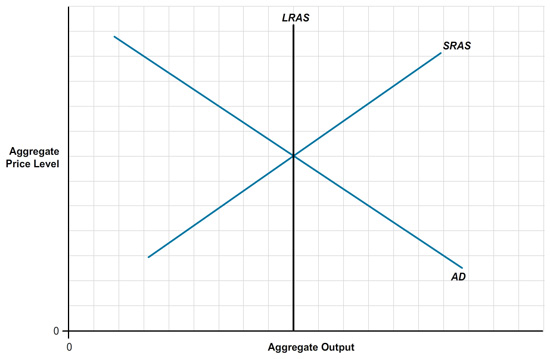Solved Problems
Chapter 9b (20b)
TABLE OF CONTENTS
Question 1 of 8
Step 1
Solved Problems
true
true
You must read each slide, and complete any questions on the slide, in sequence.
Consider the following aggregate supply-aggregate demand graph. The aggregate demand (AD) curve, short-run aggregate supply (SRAS) curve, and long-run aggregate supply (LRAS) curve are given in this graph.

Factors that shift the aggregate demand curve left include .
Decreased consumer confidence reduces the consumption component of aggregate demand. The other choices either affect supply or increase aggregate demand.
3
Step 2

After this shift, aggregate output , and the inflation rate .
If aggregate demand shifts left, aggregate output is lower (further left) and aggregate price level is lower as well.
3
Step 3

Factors that shift the aggregate supply curve left include .
High oil prices raise business costs, forcing firms to either cut back or raise prices. This is represented by a leftward shift in aggregate supply. The other choices either affect demand or increase aggregate supply.
3
Step 4

After this shift, aggregate output , and the aggregate price level .
If aggregate supply shifts left, aggregate output is lower (further left) and aggregate price level is higher.
3
Step 5

Factors that shift the aggregate demand curve right include .
Increased government spending increases the “G” component of aggregate demand. The other choices either affect supply or reduce aggregate demand.
3
Step 6

After this shift, aggregate output , and the aggregate price level .
If aggregate demand shifts right, aggregate output is higher (further right) and aggregate price level is higher as well.
3
Step 7

Factors that shift the aggregate supply curve right include .
Technological improvements allow firms to produce more output at a given price level. This results in aggregate supply moving right. The other choices either affect demand or reduce aggregate supply.
3
Step 8

After this shift, aggregate output , and the aggregate price level .
If aggregate supply shifts right, aggregate output is higher (further right) but aggregate price level is lower. This can be explained as technology helping to produce more and cheaper goods.
3